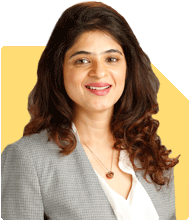Ramalingam Kalirajan |8459 Answers |Ask -Follow
Mutual Funds, Financial Planning Expert - Answered on Jun 21, 2024
He has an MBA in finance from the University of Madras and is a certified financial planner.
He is the director and chief financial planner at Holistic Investment, a Chennai-based firm that offers financial planning and wealth management advice.... more

Sir I am 61 years old. I am living with my wife, mother and a daughter in a rented (25k) house. I am getting 50,000/- as rent. My family earnings from Jewelry business about 50 lakhs annually, I am having deposit about 77 lakhs. Having family flotter policy (excepts for my mother )30 lakhs and top up 1 Cr. Purchased a site and 1.5 acres agricultural land recently. Wanted to retire (my self and my wife ) so how to plan investments.
Current Financial Overview
You have shared the following details:
Rent: Rs 25,000 per month.
Rental Income: Rs 50,000 per month.
Jewelry Business Income: Rs 50 lakhs annually.
Deposits: Rs 77 lakhs.
Health Insurance: Rs 30 lakhs family floater policy and Rs 1 crore top-up (excluding your mother).
Assets: Recently purchased site and 1.5 acres of agricultural land.
Retirement Planning Goals
Your primary goal is to plan for retirement, ensuring a steady income and financial security. Here’s how you can achieve this:
Maximizing Rental Income
You have a rental income of Rs 50,000 per month. This income can be a stable part of your retirement funds. Ensure your property is well-maintained to retain and attract tenants.
Utilizing Business Income
Your jewelry business generates Rs 50 lakhs annually. Consider transitioning the business management to a trusted individual or family member. This can provide a continued source of income without your active involvement.
Investment Strategy for Retirement
1. Fixed Deposits and Savings
You have Rs 77 lakhs in deposits. Fixed deposits are safe but offer lower returns. Diversify a portion of these funds into higher-yielding investments like mutual funds to ensure better growth.
2. Mutual Funds
Mutual funds can provide higher returns compared to fixed deposits. Invest in a mix of equity and debt mutual funds. Equity funds offer growth potential, while debt funds provide stability and regular income.
3. Systematic Withdrawal Plans (SWP)
Use SWPs from mutual funds to generate a regular income. SWPs allow you to withdraw a fixed amount periodically, ensuring a steady cash flow during retirement.
4. Health Insurance
Your family floater policy and top-up are good safeguards. However, ensure you have adequate coverage for your mother. Explore separate health insurance plans to cover her medical needs.
Diversifying Investments
1. Gold Investments
Consider investing in Gold ETFs or Sovereign Gold Bonds. These provide liquidity and returns without the risks associated with physical gold.
2. Agriculture and Site Investments
Your agricultural land and site are valuable assets. Ensure these are well-utilized or leased out to generate additional income.
Emergency Fund
1. Establishing an Emergency Fund
Ensure you have an emergency fund covering at least 6-12 months of living expenses. This fund should be in a highly liquid and safe investment like a savings account or liquid mutual fund.
Tax Planning
1. Efficient Tax Planning
Utilize tax-saving instruments to reduce your taxable income. Investments in ELSS funds, PPF, and health insurance premiums can help in tax savings.
Estate Planning
1. Will and Estate Planning
Ensure you have a will in place. This will help in the smooth transition of assets to your heirs. Consider consulting with a legal expert for estate planning.
Regular Monitoring and Review
1. Regular Monitoring
Regularly monitor your investments to ensure they are aligned with your retirement goals. Make adjustments as needed based on market conditions and financial needs.
2. Annual Review with CFP
Conduct an annual review with a Certified Financial Planner. This review will help in assessing your financial health, adjusting strategies, and ensuring you are on track to meet your goals.
Final Insights
You have a strong financial foundation with good income sources and investments. By diversifying your investments, utilizing systematic withdrawal plans, and regular monitoring, you can ensure a comfortable and financially secure retirement.
Best Regards,
K. Ramalingam, MBA, CFP,
Chief Financial Planner,
www.holisticinvestment.in
You may like to see similar questions and answers below
Ramalingam Kalirajan |8459 Answers |Ask -Follow
Mutual Funds, Financial Planning Expert - Answered on Jul 10, 2024
Ramalingam Kalirajan |8459 Answers |Ask -Follow
Mutual Funds, Financial Planning Expert - Answered on Jul 04, 2024
Ramalingam Kalirajan |8459 Answers |Ask -Follow
Mutual Funds, Financial Planning Expert - Answered on Jul 15, 2024
Ramalingam Kalirajan |8459 Answers |Ask -Follow
Mutual Funds, Financial Planning Expert - Answered on Aug 01, 2024
Dr Nagarajan J S K |406 Answers |Ask -Follow
NEET, Medical, Pharmacy Careers - Answered on May 16, 2025

Based on my understanding, no one usually requests a birth certificate at this age. Your inquiry relates to the period before and after independence. In those days, they would accept the SSLC book if you didn't have a birth certificate. However, I am not sure if that was the case during your time.
Instead, you can present your Aadhaar card, which likely includes your original date of birth. You can utilize that information.
If my response doesn't fully address your concerns, I recommend consulting a Notary Public for further assistance.
BEST WISHES.
THANK YOU SIR.
with regards
Prof Suvasish Mukhopadhyay |651 Answers |Ask -Follow
Career Counsellor - Answered on May 16, 2025
Prof Suvasish Mukhopadhyay |651 Answers |Ask -Follow
Career Counsellor - Answered on May 16, 2025
Radheshyam Zanwar |1634 Answers |Ask -Follow
MHT-CET, IIT-JEE, NEET-UG Expert - Answered on May 16, 2025
Radheshyam Zanwar |1634 Answers |Ask -Follow
MHT-CET, IIT-JEE, NEET-UG Expert - Answered on May 16, 2025
Ashwini Dasgupta |107 Answers |Ask -Follow
Personality Development Expert, Career Coach - Answered on May 16, 2025
Ramalingam Kalirajan |8459 Answers |Ask -Follow
Mutual Funds, Financial Planning Expert - Answered on May 16, 2025
Ramalingam Kalirajan |8459 Answers |Ask -Follow
Mutual Funds, Financial Planning Expert - Answered on May 16, 2025
Milind Vadjikar |1236 Answers |Ask -Follow
Insurance, Stocks, MF, PF Expert - Answered on May 16, 2025
Milind Vadjikar |1236 Answers |Ask -Follow
Insurance, Stocks, MF, PF Expert - Answered on May 16, 2025
























